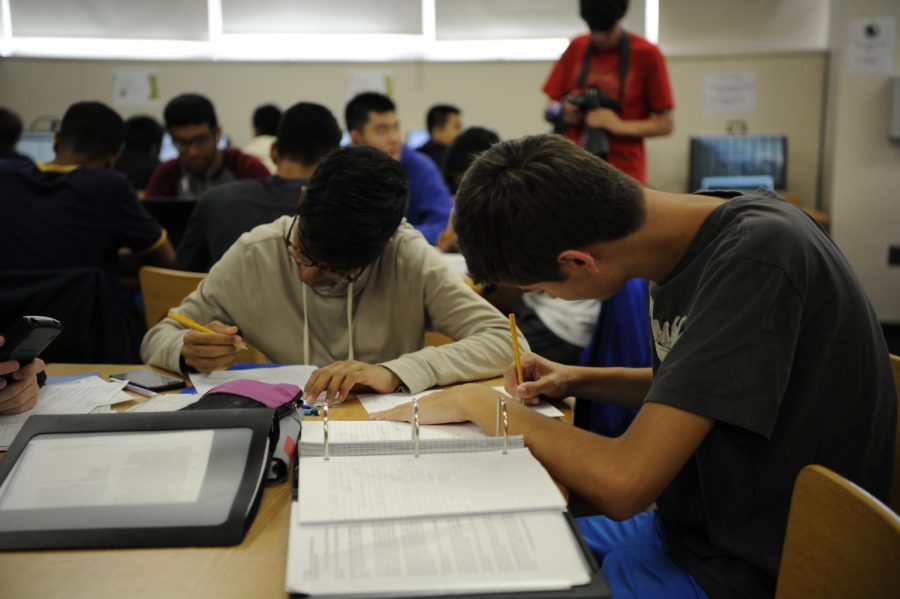How to Brace for the SAT Season
Tips and guidelines for studying for the big test
Students study together in the Bronx Science library, preparing for the SAT.
Every year, around 1.7 million students across the United States take the SAT. If you’re one of those 1.7 million, you have probably already started preparing, or at the very least, thinking about preparing for the big test. Whether you are pining for a perfect 1600 or not, a great score requires some practice.
Here is how to get started. First, determine your target score. Starting off with a goal for yourself can motivate you to study up to your test date. Second, determine how long and how often you will need to study to reach your goal. You can do this by taking a diagnostic test. How far is your current score from the one you want? Come up with a schedule that works for you. Lastly, analyze what has been keeping you from getting as many questions correct as possible. Focus on what these weaknesses are and work towards reducing them. Study these topics more or strengthen what you are already good at, in order to make up for any points that you may lose. Of course, anything regarding the SAT is easier said than done. Going step by step can ease any overwhelmed feelings.
“Sometimes workbooks and practice are better than tutors, but they certainly can help if you can’t pinpoint what it is that you’re missing when you’re taking a practice test.”
Ask yourself: do I need a tutor? Will going to a program help me? If you are someone who needs extra motivation, the answer may be yes. Having others guide you and hold you accountable for studying may be even more reason to study. If you are someone who can manage on your own, take the initiative and create a schedule. When preparing, try to duplicate the testing environment as much as possible. You can get past tests and practice from workbooks, and you can also practice online from the College Board’s website. “Sometimes workbooks and practice are better than tutors, but they certainly can help if you can’t pinpoint what it is that you’re missing when you’re taking a practice test,” said a Bronx Science student who received a 1600 and requested to keep their identity anonymous.
It is also wise to time yourself on each test. The test is a total of three hours – not including the essay – but each section is strictly timed, and you will want to ensure that you have ample time left over to check your work. Here is a list of the times and questions for each section, as well as recommended time per question.
| SAT Section | Total Time | # of Questions | Time per Question |
| Reading | 65 minutes |
52 |
75 seconds |
| Writing and Language | 35 minutes |
44 |
48 seconds |
| Math No Calculator | 25 minutes |
20 |
75 seconds |
| Math Calculator | 55 minutes |
38 |
87 seconds |
| Essay (Optional) | 50 minutes |
1 |
50 minutes |
The above table lists each section and how they are divided both time and question wise. Suggestions on how long to spend on each question can be found on the rightmost column.
In the end, hard work will pay off, but the SAT is not for everyone. Some may do better with the ACT, which is another option. The ACT includes math, reading, grammar, and science sections, scored at a scale of 36 points, with similar total testing time. It is important to strive towards the highest score that you can get, but that is not to say that your score defines who you are, either as a student or a person.
Hollie Park is a Senior Staff Reporter and senior Facebook manager for ‘The Science Survey,’ and Copy Chief of ‘The Observatory.’ She writes and...
Jackson Trauben is a Photo Editor and Chief Photographer for ‘The Observatory.’ An avid reader and artist, Jackson loves using photography as a lens...

